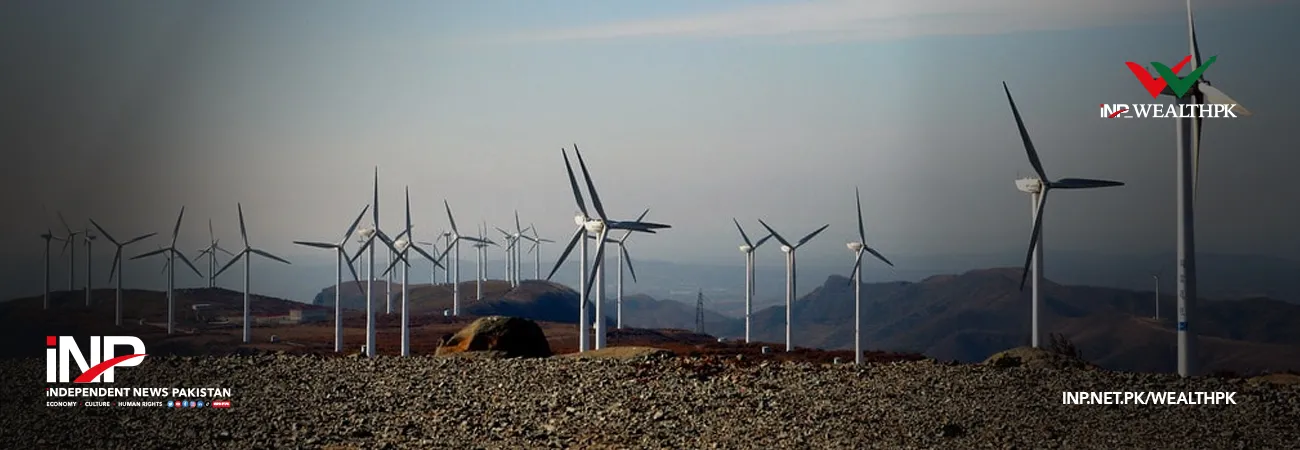INP-WealthPk
Ahmed Khan Malik
Apart from the huge reserves of coal, oil and gas, the southwestern Sindh province has a huge potential for power generation through wind, which can be a game-changer for an energy-starved country like Pakistan, reports WealthPK. The Sindh government has put in place a policy for private investors to install wind farms as independent power producers (IPPs), and provided them with suitable lands in the wind corridor. Currently, the IPPS are executing 32 wind power generation projects and these are at different stages of implementation. The land for such power projects has been provided under the “Land Grant Policy” that welcomes all local and foreign investors and power producers to invest in the wind power generation projects. The southern parts of the province are ideally located to produce maximum power from the wind source. Zone-1 is Karachi zone, which is at the height of 50m. The average wind speed at the Defense Housing Authority (DHA) Karachi and Hawke’s Bay is 5.9 and 5.4 m/s, respectively. During the monsoon season, the highest average wind speed for DHA Karachi and Hawke’s Bay occurred in July.
The maximum speed recorded for DHA Karachi is 9.0 m/s, while the maximum speed recorded for Hawke’s Bay was 7.1 m/s. There are six regions in Zone 2, i.e. Chuhar Jamali; Gharo; Jati; Keti Bandar; Mirpur Sakro; Sajawal; and Shah Bandar. Chuhar Jamali is classified as class 2, while the other six are all classified as class 3. Chuhar Jamali has the lowest average wind speed of 5.8m/s in Zone 2, while Keti Bandar has the highest average of 7.1 m/s. Similarly, Gharo and Mirpur Sakro have the lowest and highest monthly wind speeds, with 3.8m/s and 10.7m/s, respectively. Goldwind GW 140/3MW was also selected for Zone 2 due to its low cut-in and rated speed. Zone 3 consists of two regions, Golarchi and Talhar, which are classified as class 3 according to their average wind speed. At 50m in altitude, the average wind speed is 6.7m/s in Golarchi and 6.3m/s in Talhar. The maximum speed in Talhar in June reached 10.3 m/s, but in Golarchi in June and July, the maximum speed remained at 9.4 m/s.
Zone-4 consists of three regions, i.e. Jamshoro; Nooriabad; and Thano Bula Khan. As a result of wind speed, Jamshoro has been classified as class 6 wind area, Nooriabad as class 4, and Thano Bula Khan as class 2. According to a report of International Trade Association, Pakistan has considerable potential for using wind energy in the coastal belt of Sindh and Balochistan. The Government of Pakistan (GOP) has developed a wind power energy corridor along the southern coastal regions of Sindh and Balochistan. The wind data provided by the Pakistan Meteorological Department measures the coastal belt at 60km (Gharo-Keti Bandar) and 180km long, with an exploitable potential of 50,000MW of electricity generation through wind turbines. Currently, there are 26 private wind projects producing approximately 1335MW power. In addition, 10 wind projects – with cumulative capacity of 510MW – have achieved financial close and are under construction. As the government has developed the RE Policy, which envisages generating 60 percent of energy from renewable resources by 2030, the ambitious target provides several opportunities for wind energy market in Pakistan.
Credit: INP-WealthPk













